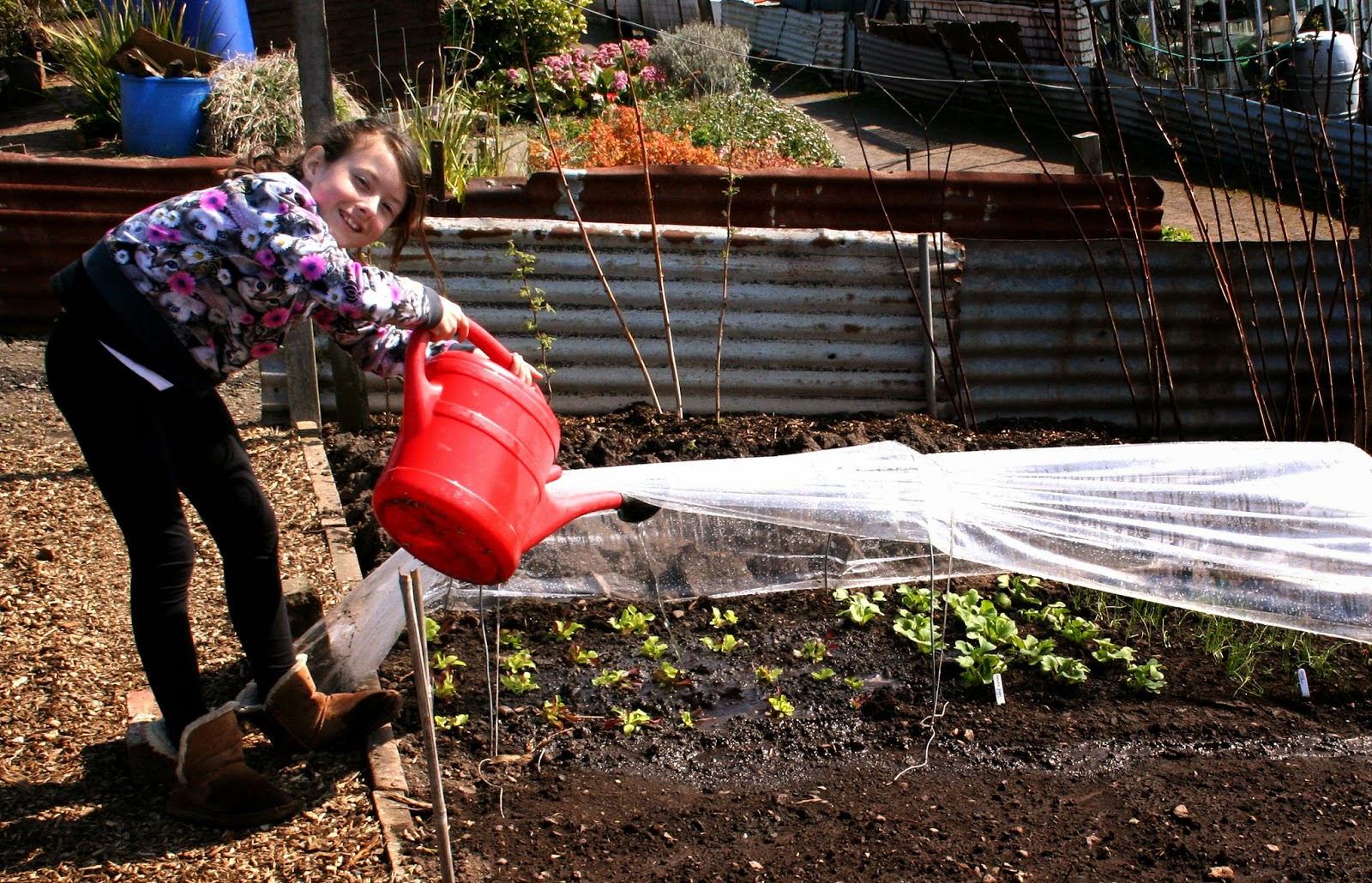SERIOUS PLANTING AND SOWING
 |
| Planting the broad beans |
In a normal year we
make a start to sowing and planting on the allotment in March. Timing always
depends on getting a few dry sunny days to warm up the soil, so plants can get
started even if this is followed by a return to cooler weather. This year there
has been a total lack of any warm days right up until Easter Sunday when the
sun shone, the cold icy winds abated and it lasted for a whole week. Although
we are now running a few weeks late the soil has warmed up enough to make a
start. Potatoes are now all in the ground but I don’t expect to see shoots till
the end of April, and that will be fine just in case we get a late frost. Broad
beans Giant Exhibition Longpod are now well established as they are quite hardy
and won’t be affected by cooler temperatures.
 |
| Sophie watering the salads |
Similarly, onion
Hytech seedlings were planted out in mid April after hardening off, and now
look just fine. Onion seed sown in cellular trays germinate in groups of one to
three plants and are then planted about four inches apart. Do not separate
plants from cells with several seedlings as these will grow quite happily in
clumps or singly.
Leek Musselburgh has
now been sown in between a couple of rows of new strawberries. The strawberries
are spaced at three feet apart so there is plenty of space for my leeks to grow
and bulk up before they are lifted for transplanting a few weeks later.
Carrot, parsnip and
turnip have now been sown in the root crop section for rotation.
 |
| Good sweet corn germination |
The space allocated
for sweet corn has been sown with clover to catch a green manure crop which
will get dug in two weeks ahead of planting. The sweet corn has been sown in
cellular trays and placed on a warm windowsill. Germination takes about two
weeks, then the seedlings grown on for a few more weeks before potting up into
7cms pots. They then grow for a further three weeks or so before planting out
in early June.
An early batch of
salads, (lettuce, spring onion, radish and beetroot) raised on a windowsill in
cellular trays are now well established on the allotment under a low polythene
tunnel. However they need watering with this dry weather.
Early peas Kelvedon
Wonder is now sown, but Alderman peas will be sown a few weeks later to give me
a succession of fresh peas.
 |
| Sowing peas |
Fruit crops
Strawberry Mae under
tunnels is flowering, but lack of warm weather has held back growth so plants
do not look very strong at present. Other strawberries have only just started
to grow.
Other fruit trees
and bushes are all running a good couple of weeks later than usual.
Peach Peregrine
growing outdoors on a south facing fence was in full flower in mid April. This
year there has been plenty flowers on the tree, but considerably later than
normal. This should, theoretically, help pollination as there are now plenty
bees around, but unfortunately there is also plenty other flowers everywhere so
bees being spoilt for choice, are ignoring my peaches. Hand pollination is
carried out every second day, but cold temperatures affect pollen production
and fertilisation so time will tell how successful this has been.
Apples, cherries and
my pear tree are all flowering profusely so it could be a good year for fruit,
provided there are no climatic abnormalities still to come.
Wee jobs to do this week
Snowdrops and
aconites usually produce a lot of seed. Do not lose this as it can be gathered
and spread around drifts to increase there size. I have a drift of aconites of
well over one thousand plants that started of several years ago from a purchase
of a small container of six plants.
Earth up potato
shoots as they appear as a late frost is still likely at this time of year.
Global warming seems to be a bit late this year, so don’t take any chances.
END





































